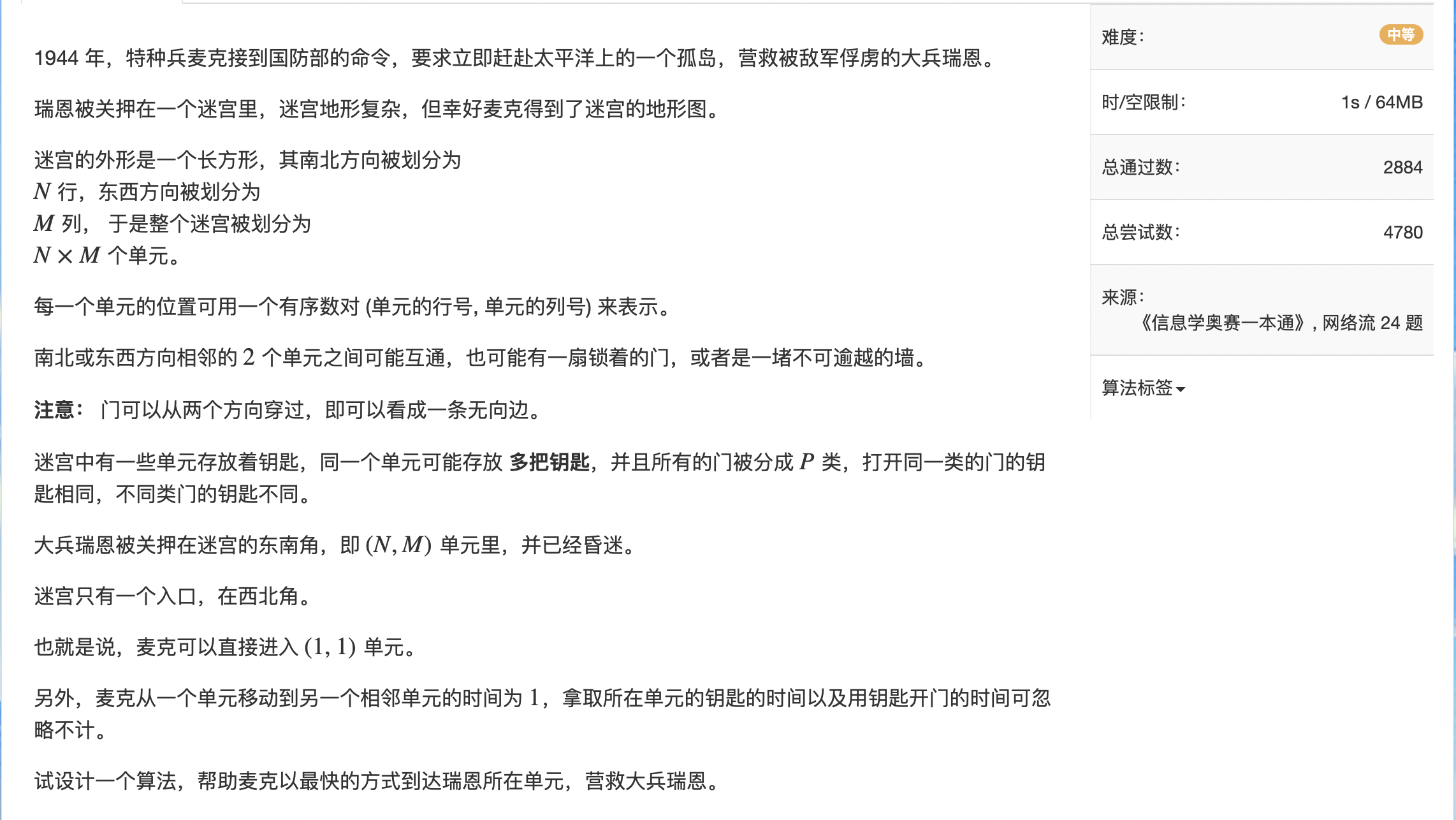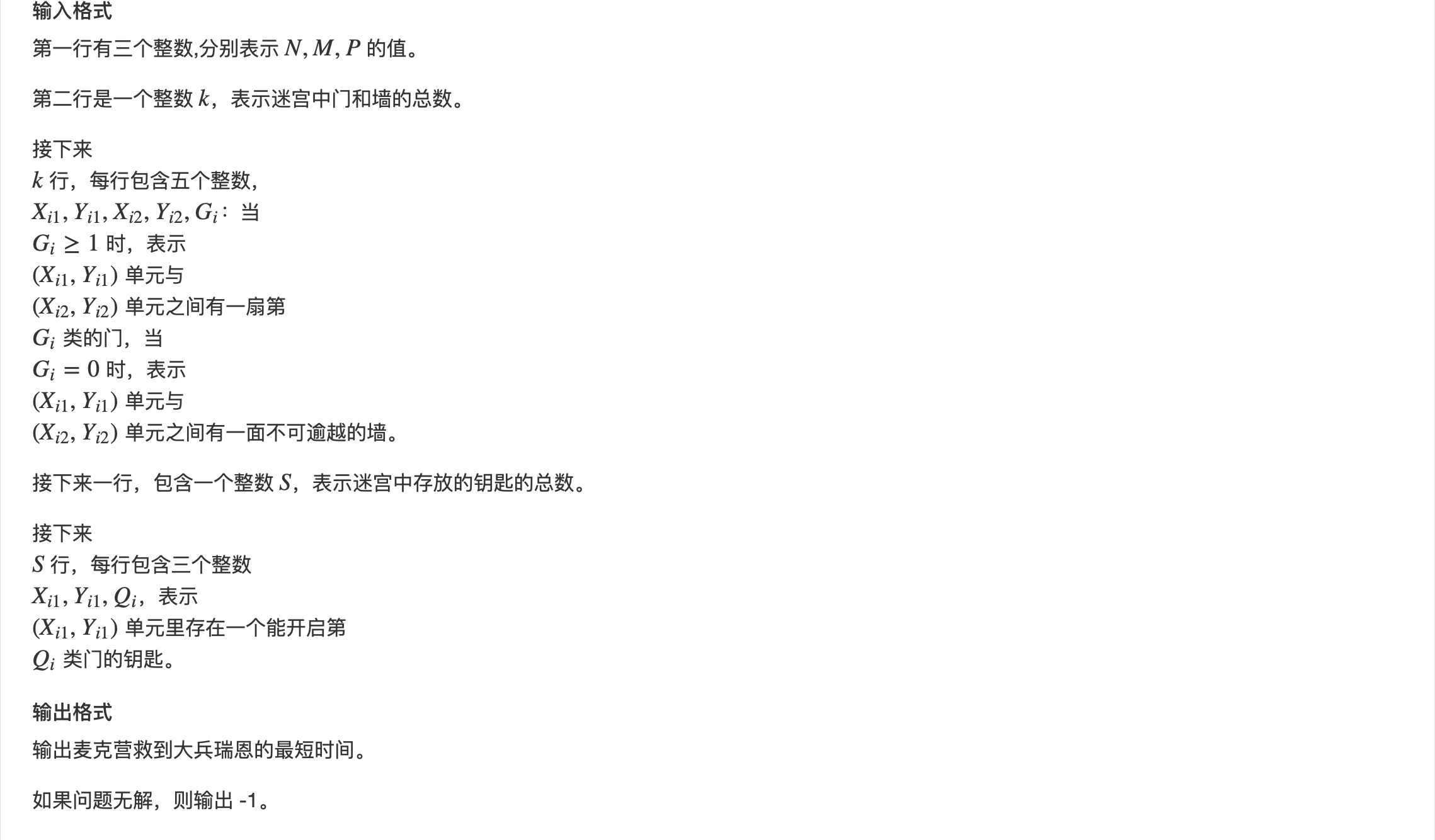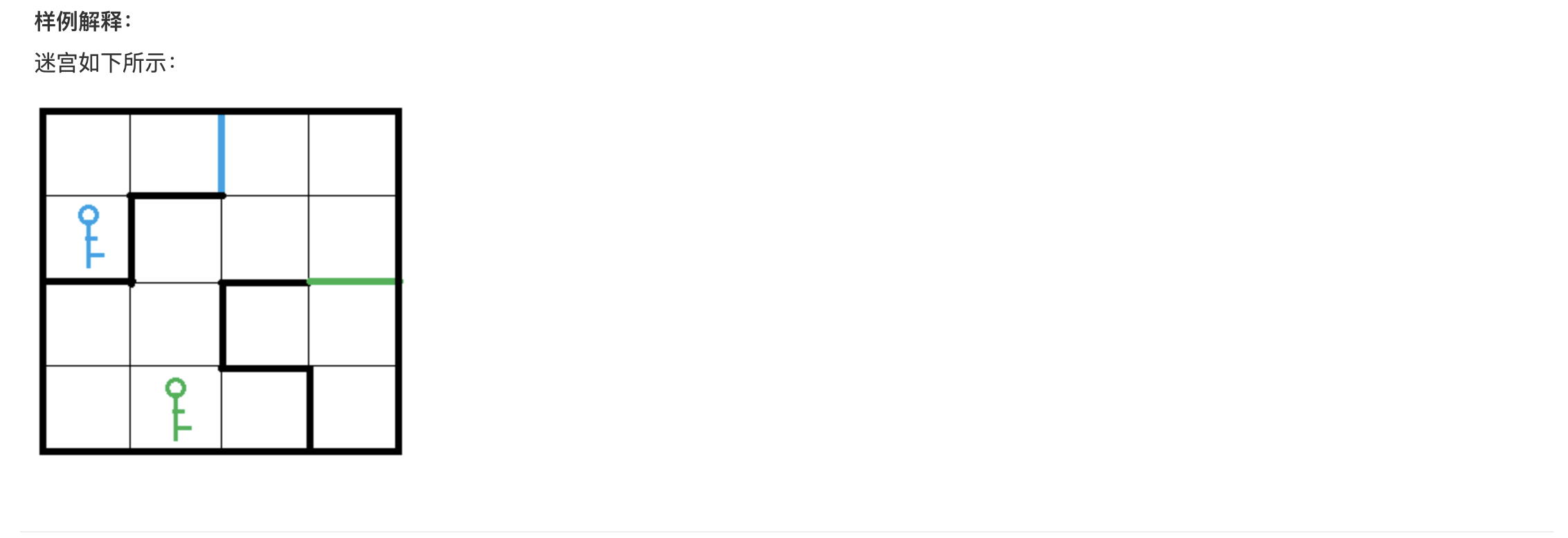题解集合
奉上原题链接
题目描述




思路提示

代码
#include <cstring>
#include <iostream>
#include <algorithm>
#include <deque>
#include <set>
#define x first
#define y second
using namespace std;
typedef pair<int, int> PII;
const int N = 11, M = 360, P = 1 << 10;
int n ,m , k, p;
int h[N*N], e[M],w[M],ne[M], idx;
int g[N][N], key[N * N];
int dist[N * N][P];
bool st[N * N][P];
set<PII> edges;
void add(int a,int b,int c)
{
e[idx] = b,w[idx] = c,ne[idx] =h[a],h[a] = idx ++;
}
void build()
{
int dx[4] = {-1,0,1,0}, dy[4] ={0,1,0,-1};
for(int i = 1;i <= n;i ++)
for(int j = 1;j <= m;j ++)
for(int u = 0;u < 4;u ++)
{
int x = i + dx[u], y = j + dy[u];
if(!x || x > n || !y || y > m) continue;
int a = g[i][j],b = g[x][y];
if(!edges.count({a,b})) add(a,b,0);
}
}
int bfs()
{
memset(dist,0x3f,sizeof dist);
dist[1][0] = 0;
deque<PII> q;
q.push_back({1,0});
while(q.size())
{
PII t = q.front();
q.pop_front();
if(st[t.x][t.y]) continue;
st[t.x][t.y] = true;
if(t.x == n * m) return dist[t.x][t.y];
if(key[t.x])
{
int state = t.y | key[t.x];
if(dist[t.x][state] > dist[t.x][t.y])
{
dist[t.x][state] = dist[t.x][t.y];
q.push_front({t.x, state});
}
}
for(int i = h[t.x]; ~i ;i = ne[i])
{
int j = e[i];
if (w[i] && !(t.y >> w[i] - 1 & 1)) continue;
if(dist[j][t.y] > dist[t.x][t.y] + 1)
{
dist[j][t.y] = dist[t.x][t.y] + 1;
q.push_back({j,t.y});
}
}
}
return -1;
}
int main()
{
cin >> n >> m >> p >> k;
for(int i = 1 , t = 1;i <= n;i ++)
for(int j = 1;j <= m;j ++)
g[i][j] = t ++;
memset(h, -1,sizeof h);
while(k --)
{
int x1,y1,x2,y2,c;
cin >> x1 >> y1 >> x2 >> y2 >> c;
int a = g[x1][y1], b =g[x2][y2];
edges.insert({a,b}), edges.insert({b,a});
if(c) add(a,b,c), add(b,a,c);
}
build();
int s;
cin >> s;
while(s --)
{
int x,y,c;
cin >> x >> y >> c;
key[g[x][y]] |= 1 << c - 1;
}
cout << bfs() << endl;
return 0;
}

